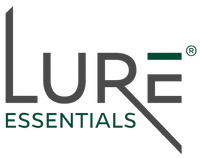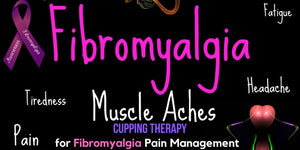Like other methods of Chinese healing, such as acupuncture and herbal medicine, cupping has been used for thousands of years to help create a healthy mind/body balance. The materials and methods have evolved, but the theory behind cupping therapy is very much the same. To fully appreciate the role that cupping plays in healing, it’s helpful to understand the history behind the technique and how early cupping came to be.
There are many ancient practices in medicine that we now know were not only ill-advised, but harmful. Cupping is the exception; it not only started out as a useful therapy, it now plays a much wider role in healing than it did initially. The earliest cups were not made of glass, but bamboo and hollowed out animal horns, which were heated and applied to the skin to create suction. Interestingly, these original cups had a very specific purpose: drainage. People suffering from skin afflictions, like boils, were treated with cups to help coax the infection from the body. Similarly they were used, quite effectively, to suck poison from snake bites. Over time, this concentrated application of negative pressure over specific points of the body became a common treatment in early Chinese surgery to help pull blood away from particular areas during procedures.
And the Chinese weren’t the only ones utilizing the healing effects of cupping. Early Egyptians cupped for a wide range of maladies, including menstrual cramps, fevers, and digestive troubles. This knowledge was passed on to ancient Greeks, who also used cups to correct spinal injuries and adjust vertebrae.
Cupping spread to Europe and North America and was put into use as early as the 1800’s for the treatment of a wide range of infections.
Wet Cupping
In past articles we’ve discussed a great deal of dry cupping techniques, but early cupping also included what is known as ‘wet cupping’, a technique where the skin is cut prior to applying the cup to create a ‘bleed’. This is similar to leach therapy (which is still used in contemporary medicine) where the cup is used to pull toxins and imperfections from the body via bloodletting. While some professional cupping technicians still utilize wet cupping in their treatments, dry cupping is much more common and the only type you should consider during home use.
The Backlash
While cupping remained a popular therapy method in the East, Western society pushed cupping to the wayside as a more scientific standard of medicine was created. The use of cups was greatly diminished in the late 1800’s and the practice was largely criticized as a superficial and ineffective treatment. As medicine became increasingly focused on internal methods, cupping was seen as a treatment that could barely scratch the surface.
For many years, cupping all but disappeared in Western medicine—you’d be hard-pressed to find any mention of it in popular culture as recent as the early 2000’s. But in recent years, celebrity influence began to do something quite incredible: put the spotlight back on cupping. The telltale ‘kisses’ left by cupping were gracing the red carpet and decorating athletes alongside gold medals. You couldn’t ask for a better endorsement, and all of a sudden, the public was wild to know more about cupping and what it could accomplish. The initial flurry of attention can be credited to celebs, but the staying power of cupping has for more to do with the fact that it’s an extremely effective method of therapy.
Now, cupping is (no pun intended) on fire once again. People from all walks of life are using cupping therapy as a way to fight pain, de-stress, and speed up the healing process. With an increased demand for reliable, practical cupping solutions, in-home therapies are more popular than ever. Cupping has many benefits, but it’s also extremely fast and effective. It doesn’t take a trained technician or hours on a table to reap the full power of a cupping session. It’s just as easy to perform self-care in the comfort of your home.
So what does cupping look like today? Glass and flexible silicone has taken the place of bamboo and horns, and cups are available in a wide array of shapes and sizes to accommodate different areas of the body. You can find a cupping solution for any malady from your head to the soles of your feet, and with the advent of flexible cups there’s no need to generate suction from fire. While some technicians still utilize traditional methods, using cupping therapy for everyday issues at home is completely doable.
So what can cupping do for you? Put your trust in a treatment that’s been in use for thousands of years and give cupping a try!







